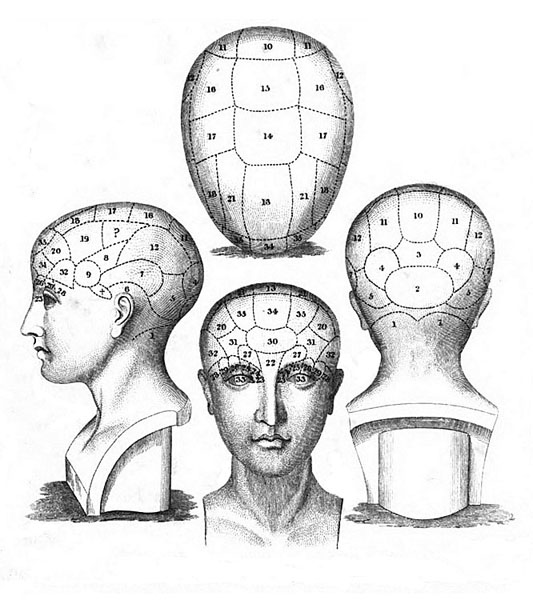∞∞∞∞∞∞∞
NAMES OF THE PHRENOLOGICAL ORGANS
referring to the figures indicating their relative position.

Phrenological Bust, 1835
George Combe's Elements of Phrenology (Boston: March, Capen & Lyon, 1835),
frontispiece
AFFECTIVE
I. Propensities.
1. Amativeness
2. Philoprogenitiveness
3. Inhabitiveness
4. Adhesiveness
5. Combativeness
6. Destructiveness
† Alimenativeness
7. Secretiveness
8. Acquisitiveness
9. Constructiveness
II. Sentiments.
10. Self esteem
11. Love of Approbation
12. Cautiousness
13. Benevolence
14. Veneration
15. Firmness
16. Conscientiousness
17. Hope
18. Wonder
19. Ideality
20. Wit or Mirthfulness
21. Imitation
INTELLECTUAL
I. Perceptive.
22. Individuality
23. Form
24. Size
25. Weight
26. Colouring
27. Locality
28. Number
29. Order
30. Eventuality
31. Time
32. Tune
33. Languagen
II. Reflective.
34. Comparison
35. Causality
∞∞∞∞∞∞∞
Notes:
None.
∞∞∞∞∞∞∞
[S:0 - ENCMPSS, 1966] - Edgar Allan Poe Society of Baltimore - Bookshelf - Early Nineteenth-Century Medicine in Poe's Short Stories - Phrenological Bust, 1824 (D. E. E. Sloane, 1966)